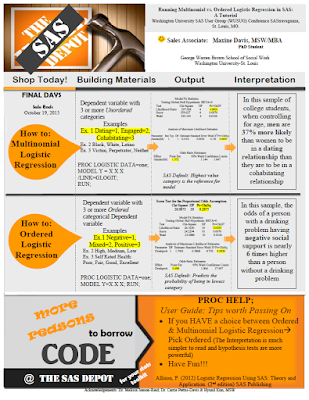Latest modern science | Critique: Thale cress RNA - Si Bejo Science
critiquesToday�s poster is from Andrzej Zielezinski. It was shown at the twentieth annual meeting of the RNA Society last year. Click to enlarge!
This poster feels very contemporary and in tune with the times. The style is very close to �flat design� seen a lot on the web: clean, primary colours, sans serif type, very little shading. (Indeed, the website mentioned on the poster has a similar aesthetic.) I love how the core of the poster (the intro, methods, and results) looks.
The abstract is problematic. At a distance or shrunk down, that big rectangle in the upper left just dominates the poster�s visuals. It draws you in, and give you... blocks of text as a reward.
I would have tried to lighten up that block so it isn�t so visually dominant. In this quick and dirty redo, I�ve made the text that nice green, for emphasis, but put the box into a lighter, more neutral grey.
It�s not quite right, but I think the balance is a little better. The better solution would be to remove it entirely!
The grey stripes in the background are subtle enough that they are not overwhelming. Like the abstract, however, they might be lightened up around the edges f the poster a bit. The stripes are running at three different angles, too: the set running across the bottom is not lining up with the upper left. And if the stripes are going to radiate out from the center of the poster, maybe they should do that in all the corners.
The title bar is unusual: very few people right align their titles, because that�s not where we are trained to read. In this case, because you have that big abstract block in the upper left, having the title on the left too would have been far too much. Having space around the abstract block helps the overall look of the poster.
The title text feels a little light. Because it is set in a low contrast light green in a thin font, with a few grey stripes behind it, it might not be easily readable or noticeable from a distance.
I�m a little puzzled that a website link shows up in two places: under the authors� affiliations, and down in the bottom green bar. I would be tempted to have it in one place alone. My instinct would be to cut the top one, so I could make the title and author�s section a bit roomier, or maybe larger.
Similarly, I can�t quite figure out why two logos are sensibly corralled in the bottom, while one is taking a primo spot in the title bar. I�m guessing the one in the title is the institution and the others are funding agencies?
The genus and species names (Arabidopis thaliana) are not in italics anywhere. My reaction:
This poster feels very contemporary and in tune with the times. The style is very close to �flat design� seen a lot on the web: clean, primary colours, sans serif type, very little shading. (Indeed, the website mentioned on the poster has a similar aesthetic.) I love how the core of the poster (the intro, methods, and results) looks.
The abstract is problematic. At a distance or shrunk down, that big rectangle in the upper left just dominates the poster�s visuals. It draws you in, and give you... blocks of text as a reward.
I would have tried to lighten up that block so it isn�t so visually dominant. In this quick and dirty redo, I�ve made the text that nice green, for emphasis, but put the box into a lighter, more neutral grey.
It�s not quite right, but I think the balance is a little better. The better solution would be to remove it entirely!
The grey stripes in the background are subtle enough that they are not overwhelming. Like the abstract, however, they might be lightened up around the edges f the poster a bit. The stripes are running at three different angles, too: the set running across the bottom is not lining up with the upper left. And if the stripes are going to radiate out from the center of the poster, maybe they should do that in all the corners.
The title bar is unusual: very few people right align their titles, because that�s not where we are trained to read. In this case, because you have that big abstract block in the upper left, having the title on the left too would have been far too much. Having space around the abstract block helps the overall look of the poster.
The title text feels a little light. Because it is set in a low contrast light green in a thin font, with a few grey stripes behind it, it might not be easily readable or noticeable from a distance.
I�m a little puzzled that a website link shows up in two places: under the authors� affiliations, and down in the bottom green bar. I would be tempted to have it in one place alone. My instinct would be to cut the top one, so I could make the title and author�s section a bit roomier, or maybe larger.
Similarly, I can�t quite figure out why two logos are sensibly corralled in the bottom, while one is taking a primo spot in the title bar. I�m guessing the one in the title is the institution and the others are funding agencies?
The genus and species names (Arabidopis thaliana) are not in italics anywhere. My reaction:































